Albert Bigelow
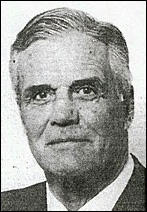
Albert Smith Bigelow, the son of Albert Francis Bigelow and Gladys Williams, was born on 1st May, 1906. His father was a partner in the Boston law firm Warren, Hogue & Bigelow. He attended Harvard University and the Massachusetts Institute of Technology before beginning his career as an architect. (1)
Bigelow became engaged to 20-year-old Josephine Noyes Rotch. Unknown to Bigelow, she was also having an affair with Harry Crosby, a 32-year old man married to Caresse Crosby. He was also poet whose friends included D. H. Lawrence, Ernest Hemingway, Hart Crane, James Joyce and Max Ernst. Crosby wrote: "I am having an affair with a girl I met (not introduced) at the Lido. She is twenty and has charm and is called Josephine. I like girls when they are very young before they have any minds." (2)
Bigelow married Josephine Rotch, on 21st June, 1929. However, she continued her affair with Crosby. He called her his "Fire Princess" and inspired his next collection of poems. She bombarded Crosby with "half-incoherent cables and letters, anxious to set the date for their next tryst." (3) Josephine wrote Crosby a 36-line poem about their relationship. The last line of the poem read "Death is our marriage". Crosby last entry in his diary contained the words: "One is not in love unless one desires to die with one's beloved. There is only one happiness it is to love and to be loved." (4)
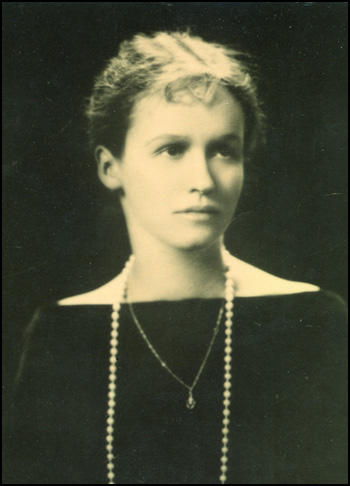
Josephine and Crosby were both found dead in his apartment on 10th December. Crosby was in bed with a .25 calibre bullet hole in his right temple next to Josephine, who had a matching hole in her left temple. (5) Crosby was holding the Belgian automatic pistol in his right hand. There was no suicide note and Albert Bigelow argued that his wife had been murdered. (6)
Albert Bigelow and the Second World War
In 1931 Albert Bigelow married Sylvia Weld, an actress, who later appeared in several plays on Broadway. Albert Bigelow established himself as a successful architect in New York City and helped to design buildings for the 1939 World's Fair. The following year he left the profession and became an artist, frequently painting seascapes and nautical scenes. (7)
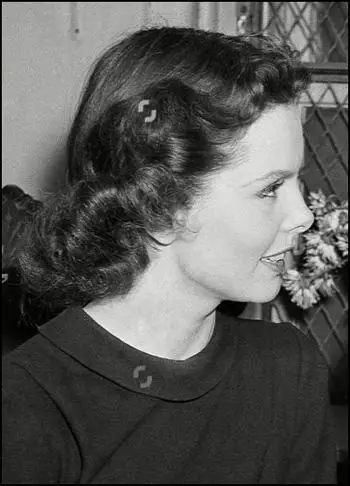
Albert Bigelow served in the United States Navy during the Second World War, first as commander of a submarine chaser patrolling the Solomon Islands, and later as captain of the destroyer escort USS Dale W. Peterson. He wrote in his book, Voyage of the Golden Rule (1959): “I was Captain of the destroyer escort Dale W. Peterson—DE 337—and I was on her bridge as we approached Pearl Harbor from San Diego when the first news arrived of the explosion of the atomic bomb over Hiroshima. Although I had no way of understanding what an atom bomb was I was absolutely awestruck, as I suppose all men were for a moment. Intuitively it was then that I realized for the first time that morally war is impossible.” (8)
Peace Campaigner
Repulsed by the dropping of atomic bombs on Hiroshima and Nagasaki, Bigelow "opened his home to Hiroshima survivors undergoing plastic surgery in American hospitals." Bigelow was humbled by the experience, in particular by his realization that the young women "harbored no resentment against us or other Americans". Bigelow was appointed housing commissioner of Massachusetts by Governor Robert F. Bradford and helped build low-cost housing for veterans. Sylvia Weld Bigelow became a Quaker in 1948 and encouraged her husband to be active in the peace movement. In 1954 they both took part in a protest against chemical weapons being stored at Fort Detrick in Maryland. (9)
Bigelow became a founding member of the Committee for Non-Violent Action (CNVA), he gained an international reputation as a militant anti-nuclear activist and in 1958 when he captained the Golden Rule, a protest ship sponsored by CNVA and the National Committee for a Sane Nuclear Policy (SANE). Bigelow sailed the thirty-foot ketch into a drop zone in the Pacific to protest America's scheduled testing of nuclear weapons near the island of Eniwetok, he warned President Dwight Eisenhower that even though "our voices have been lost in the massive effort of those responsible for preparing this country for war... we mean to speak now with the weight of our whole lives." (10) Each time, the voyage was foiled by the U.S. Coast Guard and Bigelow was eventually jailed for 60 days in Honolulu - but the attendant publicity provided him with a stage for his political views. (11)
Freedom Riders
Bigelow and his wife joined Congress on Racial Equality (CORE). Members were mainly pacifists who had been deeply influenced by Henry David Thoreau and the teachings of Mahatma Gandhi and the nonviolent civil disobedience campaign that he used successfully against British rule in India. CORE became convinced that the same methods could be employed by blacks to obtain civil rights in America. (12)
In February, 1961, Bigelow attended a CORE conference in Kentucky where the organisation laid out its plans to have Freedom Riders challenge racist policies in the south. It was decided they would ride interstate buses in the South in mixed racial groups to challenge local laws or customs that enforced segregation in seating. (13) John Lewis, a student at Nashville American Baptist Theological Seminary, commented later: "At this time human dignity is the most important thing in my life. This is the most important decision in my life, to decide to give up all if necessary for the Freedom Ride, that Justice and Freedom might come to the Deep South." (14)
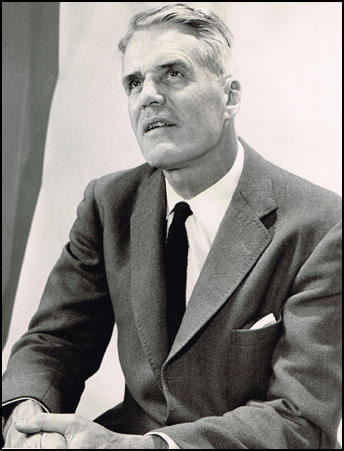
Bigelow volunteered to become a passenger on the first bus that left Washington on 4th May, 1961, for Georgia, Alabama and Mississippi. At fifty-five he was the second oldest of the Freedom Riders. Others on this bus included John Lewis, James Peck, James Farmer, Genevieve Hughes, Walter Bergman, Frances Bergman, Ed Blankenheim, Hank Thomas, Benjamin Elton Cox, Charles Person, Herman K. Harris and Jimmy McDonald. Farmer later recalled: "We were told that the racists, the segregationists, would go to any extent to hold the line on segregation in interstate travel. So when we began the ride I think all of us were prepared for as much violence as could be thrown at us. We were prepared for the possibility of death." (15)
The second bus left on the 17th May and its passengers included William Barbee, William E. Harbour, James Zwerg, Salynn McCollum, Susan Herrmann, Lafayette Bernard, Susan Wilbur, Frederick Leonard, Lucretia Collins, Paul Brooks and Catherine Burks, Susan Herrmann, 20, a student at Fisk University, Nashville, majoring in psychology, later recalled: "We were all prepared to die - and for a while Saturday I thought all 21 of us would die at the hands of that mob in Montgomery. We did not fight back. We do not believe in violence. We were freedom riders... trying to ride in buses through Alabama to New Orleans to help the cause of true freedom for all the races." (16)
The Freedom Riders traveled in integrated seating and visited "white only" restaurants. Governor John Malcolm Patterson of Alabama who had been swept to victory in 1958 on a stridently white supremacist platform, commented that: "The people of Alabama are so enraged that I cannot guarantee protection for this bunch of rabble-rousers." Patterson, who had been elected with the support of the Ku Klux Klan added that integration would come to Alabama only "over my dead body." (17) In his inaugural address Patterson declared: "I will oppose with every ounce of energy I possess and will use every power at my command to prevent any mixing of white and Negro races in the classrooms of this state." (18)
On 14th May, 1961, a mob of Klansmen, attacked the bus at Anniston, Alabama. Albert Bigelow later explained: "Our bus, approaching Anniston, stopped while our driver conversed with the driver of an outgoing bus. A traveler from the bus leaving Anniston station. Outside, no police were in sight. During the fifteen minutes in Anniston, while the mob slashed tires and smashed windows, one policeman appeared in a brown uniform. He did nothing to stop vandalism but fraternized with the mob. A man in a white overall with a dark blue oval insignia on the breast was friendly with the policemen and consulted from time to time with the most active of the mob. Two policemen appeared and cleared a path. The bus left the station. There were no arrests. A few miles out on the highway to Birmingham a tire blow and we pulled to the roadside, the mob after us in about 50 cars. They surrounded us again, yelling and smashing windows, brandishing clubs, chains and pipes; I saw all three." (19)
Some, having just come from church, were dressed in their Sunday best. One man threw a bomb through a broken window. When the Freedom Riders left the bus they were attacked by baseball bats and iron bars. Genevieve Hughes said she would have been killed but an exploding fuel tank convinced the mob that the whole bus was about to explode and the white bomb retreated. Eventually they were rescued by local police but no attempt was made to identify or arrest those responsible for the assault. (20)
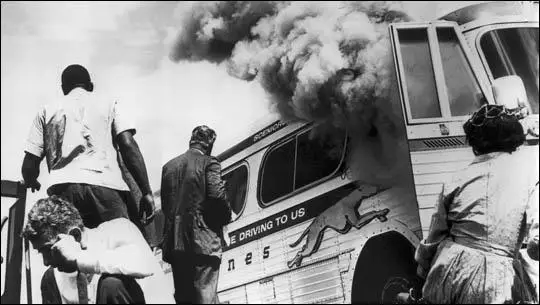
James Peck later explained: "When the Greyhound bus pulled into Anniston, it was immediately surrounded by an angry mob armed with iron bars. They set about the vehicle, denting the sides, breaking windows, and slashing tires. Finally, the police arrived and the bus managed to depart. But the mob pursued in cars. Within minutes, the pursuing mob was hitting the bus with iron bars. The rear window was broken and a bomb was hurled inside. All the passengers managed to escape before the bus burst into flames and was totally destroyed. Policemen, who had been standing by, belatedly came on the scene. A couple of them fired into the air. The mob dispersed and the injured were taken to a local hospital." (21)
The surviving bus traveled to Birmingham, Alabama. When they arrived at the Montgomery Greyhound Bus Station they saw an angry mob. Gary Thomas Rowe was a member of the KKK who had arrived in the town that day: "We made an astounding sight... men running and walking down the streets of Birmingham on Sunday afternoon carrying chains, sticks, and clubs. Everything was deserted; no police officers were to be seen except one on a street corner. He stepped off and let us go by, and we barged into the bus station and took it over like an army of occupation. There were Klansmen in the waiting room, in the rest rooms, in the parking area." (22)
James Zwerg later recalled: "As we were going from Birmingham to Montgomery, we'd look out the windows and we were kind of overwhelmed with the show of force - police cars with sub-machine guns attached to the backseats, planes going overhead... We had a real entourage accompanying us. Then, as we hit the city limits, it all just disappeared. As we pulled into the bus station a squad car pulled out - a police squad car. The police later said they knew nothing about our coming, and they did not arrive until after 20 minutes of beatings had taken place. Later we discovered that the instigator of the violence was a police sergeant who took a day off and was a member of the Klan. They knew we were coming. It was a set-up." (23)
The driver had a brief conversation with the white mob. He returned to the bus with a small group of white people and told the passengers: "We have received word that a bus has been burned to the ground and passengers are being carried to the hospital by the carloads. A mob is waiting for our bus and will do the same to us unless we get these blacks off the front seats." The white men began to try and remove Charles Person and Herman K. Harris from the front seat. Walter Bergman and James Peck attempted to intervene but they were soon knocked to the floor. (24)
They adhered to Gandhian discipline and refused to fight back and all the men took severe beatings, but this only encouraged their attackers. Walter Bergman, the oldest of the Freedom Riders at sixty-one, was knocked unconscious, and one of the attackers continued to stomp on his chest. Frances Bergman begged the Klansman to stop beating her husband, he ignored her plea. Fortunately, one of the other Klansmen - realizing that the defenceless Freedom Rider was about to be killed - eventually called a halt to the beating. (25)
According to James Farmer, Bigelow also took a beating. "Albert Bigelow, who had been a Navy captain during World War II, big, tall, strapping fellow, very impressive, from Connecticut - then stepped right between the hoodlums and John Lewis. Lewis had been absorbing more of the punishment. They then clubbed Bigelow and finally knocked him down, and that took some knocking because he was a pretty strapping fellow, and he didn't hit back at all. They knocked him down, and at this point police arrived and intervened. They didn't make any arrests." (26)
Albert Smith Bigelow died at a nursing home in Walpole, Massachusetts on 6th October 1993.
Primary Sources
(1) Albert Bigelow, testimony, Committee of Inquiry (25th May, 1962)
Our bus, approaching Anniston, stopped while our driver conversed with the driver of an outgoing bus. A traveler from the bus leaving Anniston station. Outside, no police were in sight. During the fifteen minutes in Anniston, while the mob slashed tires and smashed windows, one policeman appeared in a brown uniform. He did nothing to stop vandalism but fraternized with the mob. A man in a white overall with a dark blue oval insignia on the breast was friendly with the policemen and consulted from time to time with the most active of the mob. Two policemen appeared and cleared a path. The bus left the station. There were no arrests.
A few miles out on the highway to Birmingham a tire blow and we pulled to the roadside, the mob after us in about 50 cars. They surrounded us again, yelling and smashing windows, brandishing clubs, chains and pipes; I saw all three. They surged around the bus, screamed obscenities and tried to board but were prevented by Eli Cowling of the State Highway police, in plainclothes, who with a pistol, held back the mob from inside our door. We had thought Cowling an ordinary passenger. This single-handed action showed that a mob can be held off.
(2) James Farmer, interviewed by Howell Raines for his book, My Soul is Rested: Movement Days in the Deep South Remembered (1983)
We also felt that one of the weaknesses of the student sit-in movement of the South had been that as soon as arrested, the kids bailed out... This was not quite Gandhian and not the best tactic. A better tactic would be to remain in jail and to make the maintenance of segregation so expensive for the state and the city that they would hopefully come to the conclusion that they could no longer afford it. Fill up the jails, as Gandhi did in India, fill them to bursting if we had to. In other words, stay in without bail.
So those were the two things: cutting across state lines, putting the movement on wheels, so to speak, and remaining in jail, not only for its publicity value but for the financial pressure it would put upon the segregators. We decided that a good approach here would be to move away from restaurant lunch counters. That had been the Southern student sit-in movement, and anything we would do on that would be anticlimactic now. We would have to move into another area and so we decided to move into the transportation, interstate transportation...
So we, following the Gandhian technique, wrote to Washington. We wrote to the Justice Department, to the FBI, and to the President, and wrote to Greyhound Bus Company and Trailways Bus Company, and told them that on May first or May fourth - whatever the date was, I forget now - we were going to have a Freedom Ride. Blacks and whites were going to leave Washington, D.C., on Greyhound and Trailways, deliberately violating the segregated seating requirements and at each rest stop would violate the segregated use of facilities. And we would be nonviolent, absolutely nonviolent, throughout the campaign, and we would accept the consequences of our actions. This was a deliberate act of civil disobedience...
We got no reply from Justice. Bobby Kennedy (U.S. Attorney General) no reply. We got no reply from the FBI. We got no reply from the White House, from President Kennedy. We got no reply from Greyhound or Trailways. We got no replies...
We had some of the group of thirteen sit at a simulated counter asking for coffee. Somebody else refused them service, and then we'd have others come in as white hoodlums to beat 'em up and knock them off the counter and club 'em around and kick 'em in the ribs and stomp 'em, and they were quite realistic, I must say. I thought they bent over backwards to be realistic. I was aching all over. And then we'd go into a discussion as to how the roles were played, whether there was something that the Freedom Riders did that they shouldn't have done, said that they shouldn't have said, something that they didn't say or do that they should have, and so on. Then we'd reverse roles and play it over and over again and have lengthy discussions of it.
I felt, by the way, that by the time that group left Washington, they were prepared for anything, even death, and this was a possibility, and we knew it, when we got to the Deep South.
Through Virginia we had no problem. In fact they had heard we were coming, Greyhound and Trailways, and they had taken down the For Colored and For Whites signs, and we rode right through. Yep. The same was true in North Carolina. Signs had come down just the previous day, blacks told us. And so the letters in advance did something.
In South Carolina it was a different story.... John Lewis started into a white waiting room in some town in South Carolina... and there were several young white hoodlums, leather jackets, ducktail haircuts, standing there smoking, and they blocked the door and said, "You can't come in here." He said, "I have every right to enter this waiting room according to the Supreme Court of the United States in the Boynton case."
He tried to walk past, and they clubbed him, beat him, and knocked him down. One of the white Freedom Riders . . . Albert Bigelow, who had been a Navy captain during World War II, big, tall, strapping fellow, very impressive, from Connecticut - then stepped right between the hoodlums and John Lewis. Lewis had been absorbing more of the punishment. They then clubbed Bigelow and finally knocked him down, and that took some knocking because he was a pretty strapping fellow, and he didn't hit back at all. They knocked him down, and at this point police arrived and intervened. They didn't make any arrests.
(3) Steven Slosberg, Harvard Magazine (July, 2013)
Addressing the Democratic National Convention in Charlotte, North Carolina, last September, Georgia congressman John Lewis recalled his first visit to the city - in 1961, as one of the 13 original Freedom Riders. Their bus trip was planned by the Congress of Racial Equality (CORE) as a journey from Washington, D.C., to New Orleans to test a 1960 Supreme Court ruling banning racial discrimination in interstate public facilities. Just south of Charlotte, in Rock Hill, South Carolina, Lewis and his seatmate, Albert Bigelow ’29, tried to enter a white waiting room. “We were met by an angry mob that beat us and left us lying in a pool of blood,” said Lewis. “Some police officers came up and asked us whether we wanted to press charges. We said no. We come in peace, love, and nonviolence.”
Lewis would later describe “Bert” Bigelow, born into a prominent Boston family steeped in Harvard connections, as “a big, rugged-looking guy from New England who looked as if he belonged on a sailing ship a century ago.” And several years before he boarded that bus, Bigelow had sailed, literally, into the annals of mid-twentieth-century nonviolent protest and political activism. In the spring of 1958, as skipper of a 30-foot ketch, the Golden Rule, he and four other men tried twice to navigate into the Pacific nuclear-bomb testing grounds at Eniwetok Atoll in the Marshall Islands to protest nuclear proliferation. Each time, the voyage was foiled by the U.S. Coast Guard and Bigelow was eventually jailed for 60 days in Honolulu—but the attendant publicity provided him with a stage for his political views.
Bigelow explained the evolution of his activism in his 1959 book, The Voyage of the Golden Rule. “Later in World War II,” he wrote, “I was Captain of the destroyer escort Dale W. Peterson—DE 337—and I was on her bridge as we approached Pearl Harbor from San Diego when the first news arrived of the explosion of the atomic bomb over Hiroshima. Although I had no way of understanding what an atom bomb was I was absolutely awestruck, as I suppose all men were for a moment. Intuitively it was then that I realized for the first time that morally war is impossible.”
Bigelow described himself as he entered the navy as having “an enormous latent desire to conform, to ‘go along.’ ” He had studied architecture at MIT after Harvard and then worked at designing residences; he also helped design buildings for the 1939 New York World’s Fair. Left a widower after a brief and tragic first marriage, he married Sylvia Weld, an actress, in 1931. After the war, he searched for “some sort of unified life-philosophy or religion,” and eventually followed his wife in joining the Quakers, in 1954. A year later, with their own two daughters grown, the Bigelows welcomed into their Greenwich, Connecticut, home two “Hiroshima Maidens,” young women who had been injured and disfigured by the A-bomb blast and then brought to the United States for plastic surgery. Bigelow’s experience with the two women, he wrote, “forced me to see that I had no choice but to make the commitment to live, as best I could, a life of nonviolence and reconciliation.”
In 1956, before the presidential election, he sent $300 to Dr. Martin Luther King Jr. and mentioned his plan to write in King’s name for president. In 1958, he became involved with an anti-nuclear-proliferation docudrama, Which Way the Wind, sponsored by the American Friends Service Committee; he served as a producer and narrated performances after his Pacific expedition. One of the Golden Rule’s crew members, James Peck ’36, a union organizer, was also active in CORE projects and Bigelow later joined him in civil-rights causes, including that first Freedom Ride. He also continued to speak out tirelessly against the arms race in print and at rallies at home and abroad. Reflecting on his years of activism in 1964, he wrote, “I remain an optimist despite mounting evidence that, if we do not blow ourselves off the earth, we shall soon eat ourselves off the earth.” (Vegetable gardening, he added, had become a “principal side interest.”)
By the mid 1960s, his public activism quieted, though he still railed in lectures and letters against nuclear proliferation. He savored sailing and a longtime love—painting (the Mystic Seaport museum in Connecticut owns eight of his marine works)—and stayed involved in community affairs, at one point as “the sole male member of the [local] League of Women Voters.”
Although Bigelow’s prominence faded, his name and activism live on, in commemorations of the Freedom Rides and through the efforts of Veterans for Peace, a national organization of military veterans committed to the cause of world peace. The group is far along in its work to restore the Golden Rule (found derelict in a small California shipyard) and ultimately sail it as both a symbol and a classroom for instruction against the “manufacture and use of nuclear weapons.” The project serves as a fitting legacy for a man born to privilege who was jolted from complacency by the devastation wrought by war and committed himself to justice and peace.
“I sense that most of us feel overwhelmed by a disintegrating world, seemingly beyond our control,” he wrote in his fiftieth anniversary class report. “…At the same time, we have the potential to preserve and enhance our delicate, beautiful planet and create on it a society of respect, sharing, and caring—where love will not be considered a sign of weakness.”
(4) Randy Newman, New York Times (8th October, 1993)
Albert Smith Bigelow, a pacifist who tried several times to sail into a nuclear testing area near the Marshall Islands in 1958 in a protest against nuclear weapons, died on Wednesday at a retirement home in Walpole, Mass. He was 87.
His family said he had had a long illness.
Mr. Bigelow, who served as a Navy lieutenant commander aboard destroyer escorts in the Pacific theater in World War II, became a Quaker and a follower of the teachings of Mahatma Gandhi in 1954.
On Feb. 10, 1958, he and three fellow Quakers set sail from San Pedro, Calif., in a 30-foot ketch, the Golden Rule, for Eniwetok Atoll in the Western Pacific to try to halt nuclear tests that were to be held there two months later. After first being turned back by storms, they eventually reached Honolulu but were never able to reach their ultimate destination.
Three attempts to reach Eniwetok were intercepted by Coast Guard cutters enforcing a Federal court injunction against entering the testing grounds. After the final attempt, the crew was jailed for 60 days.
Mr. Bigelow, a graduate of Harvard University and the Massachusetts Institute of Technology, began his career as an architect in New York, helping to design buildings for the 1939 World's Fair. But he soon left architecture and became an artist, frequently painting seascapes and nautical scenes.
After the war he was appointed housing commissioner of Massachusetts by Gov. Robert Bradford and helped build low-cost housing for veterans.
But Mr. Bigelow's religious convictions led him to participate in a 1954 protest of chemical weapons at Fort Dietrich, Md., and later to take in, with his wife, two women who had been disfigured by the atomic bomb that the United States dropped on Hiroshima, Japan, in Aug. 6, 1945.
That experience, he later wrote, "forced me to see that I had no choice but to make the commitment to live, as best I could, a life of nonviolence."
Besides helping to organize and taking part in demonstrations against nuclear warfare, Mr. Bigelow was an ardent advocate of civil rights. In 1961, as a Freedom Rider in the South, he was one of several people who were badly beaten by segregationists at a bus stop in Rock Hill, S.C.
He is survived by his wife of 62 years, the former Sylvia Weld; two daughters, Lisa Roberts and Kate Benton, both of Manhattan, eight grandchildren and eight great-grandchildren.
Student Activities
References
(1) Randy Newman, New York Times (8th October, 1993)
(2) Harry Crosby, letter to his mother, Henrietta Grew Crosby (24th July, 1928)
(3) Linda Hamalian, The Cramoisy Queen: A Life of Caresse Crosby (2005) page 68
(4) Harry Crosby, diary entry (10th December, 1929)
(5) The New York Times (11th December, 1929)
(6) Lannie Goodman, France Today (29th September, 2017)
(7) Randy Newman, New York Times (8th October, 1993)
(8) Albert Bigelow, Voyage of the Golden Rule (1959) page 197
(9) Raymond Arsenault, Freedom Riders (2006) page 101
(10) Albert Bigelow, Liberation Magazine (February, 1958)
(11) Steven Slosberg, Harvard Magazine (July, 2013)
(12) Juan Williams, Eyes on the Prize: America's Civil Rights Years (1987) page 148
(13) Grand Rapids People's History Project (22nd February, 2016)
(14) John Lewis, Walking with the Wind (1998) page 108
(15) Juan Williams, Eyes on the Prize: America's Civil Rights Years (1987) page 148
(16) Susan Herrmann, Los Angeles Times (22nd May, 2011)
(17) Howard Zinn, SNCC: The New Abolitionists (2014) page 46
(18) Time Magazine (2nd June, 1961)
(19) Albert Bigelow, testimony, Committee of Inquiry (25th May, 1962)
(20) David Halberstam, The Children (1998) pages 262-263
(21) James Peck, Freedom Ride (1962) page 125
(22) Gary Thomas Rowe, My Undercover Years with the Ku Klux Klan (1976) pages 40-42
(23) James Zwerg interview in The People's Century (October, 1996)
(24) Raymond Arsenault, Freedom Riders (2006) page 419
(25) Dorothy B. Kaufman, The First Freedom Ride: The Walter Bergman Story (1989) pages 154-155
(26) James Farmer, interviewed by Howell Raines for his book, My Soul is Rested: Movement Days in the Deep South Remembered (1983)
